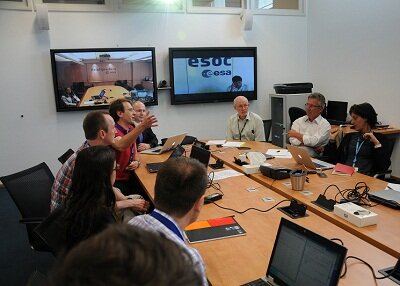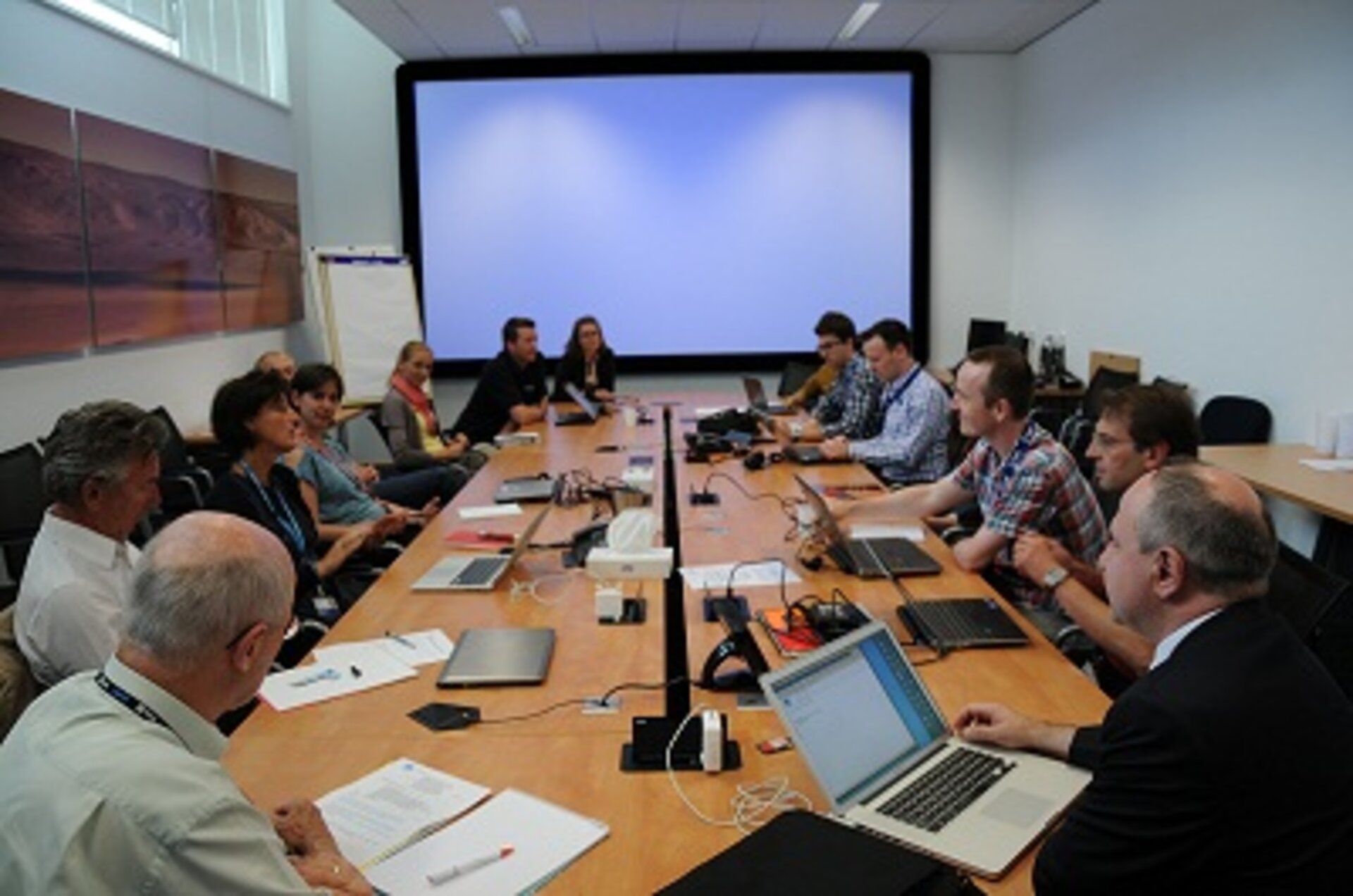To IOD or not to IOD that is the question
Indeed, that was the question being asked in the CDF by two teams debating the need for an In-Orbit Demonstrator (IOD) for the proposed Active Debris Removal (ADR) project e.Deorbit.
The debate was the idea of the CleanSpace initiative project manager, Luisa Innocenti, who wanted a more definitive answer to the trade-off as to whether an In-Orbit Demonstrator was value for money.
Traditionally IODs have been used to take new and unproven technologies and devise a mission that both proves the technologies, advances the knowledge of the Agency and carries out a practical mission of benefit to the member states. Classic examples of the IOD principle are the Proba satellites.
For certain the e.Deorbit proposal contains new technologies and operational techniques never tried by anyone ever before, but should that be reason enough to have an IOD?
That was the question put before two selected teams, one picked from the Proba team to be in favour of an IOD and one represented by the e.Deorbit CDF study team leader and system engineer opposed to the need for an IOD. The debate was chaired by Jack Bosma the recently retired Inspector General of ESA and attended by a mixed audience of interested parties ranging from section heads to YGTs.
The debate was opened with the defence of IODs and the specific need for an IOD in the case of e.Deorbit. The arguments centred around the fact that so much of the technology required was new and untested; ranging from the proposed capture methods (net or grappling arms) to the GNC algorithms and sensors needed to manoeuvre close to an uncontrolled tumbling body, and that the prospect of failure was so high that an IOD was the logical and safe way to proceed. An IOD would also enable the complex systems and operations processes to be investigated and trialled prior to the e.Deorbit mission.

The argument from the no IOD team was that from a technical, psychological and practical level an IOD was not required and is considered too costly. Also, the fact that an IOD may delay the actual e.Deorbit mission, which is proposing to remove a dead satellite from a very busy orbit where it runs the risk of being hit by other space debris potentially causing a debris cloud and contributing considerably to the space debris problem, was also given as a reason to proceed straight to the real mission without the need for an IOD.
Both teams had to fend off many questions from the audience and Jack Bosma injected his considerable knowledge of the workings of ESA management and his many years experience both as an engineer and a senior member of ESA into the debate, which was very lively.
The outcome? A draw perhaps, certainly the winners were the people who attended and probably got the best insight into the pros and cons of In-Orbit Demonstrators from a systems and management perspective that they will ever get.


